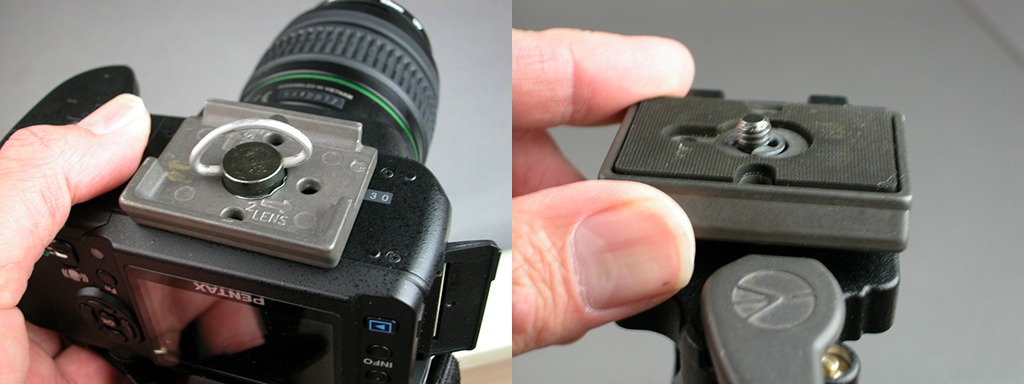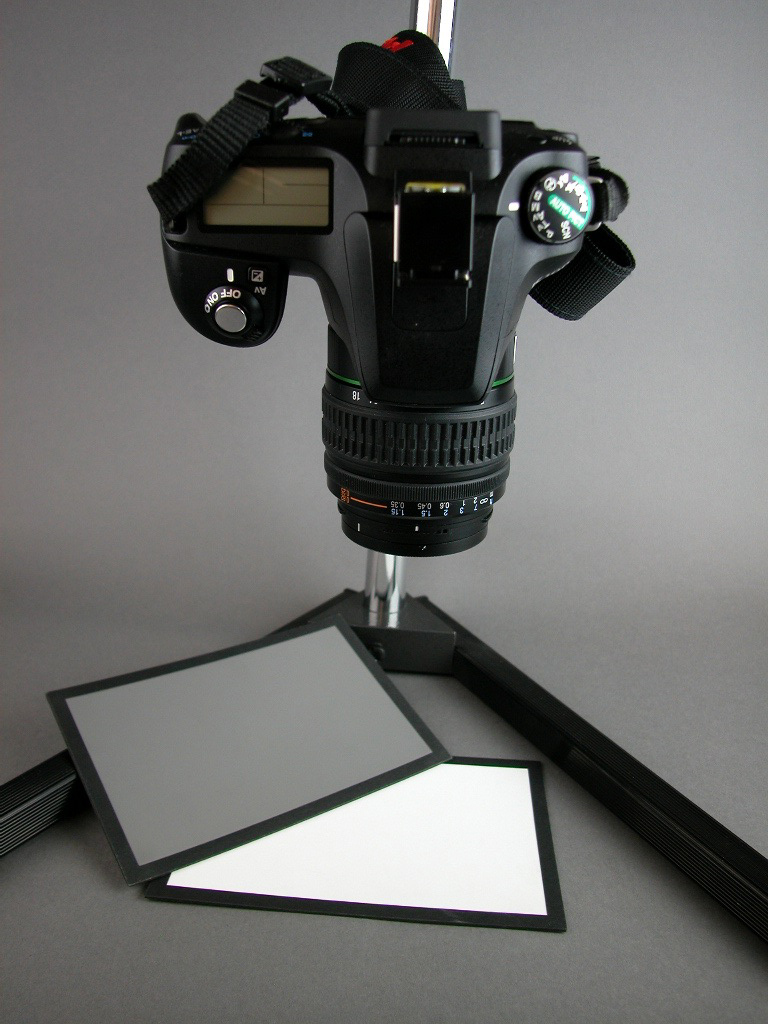26 Camera Equipment
Richard Adams and Reem el Asaleh; Martin Habekost; Jason Lisi; and Art Seto
This chapter discusses what you’ll need to get started in digital photography. In addition to a digital camera, you may need additional lenses, filters, studio lighting, lighting diffusers and reflectors, light stands and quality control devices to help make your photos accurate and consistent (but with the technology built into today’s cameras, including our phones, you can get pretty far without needing extra equipment).
Camera
A digital camera is the first thing you’ll need for digital photography. Traditionally, digital cameras have been commonly discussed as belonging to one of three categories: consumer, prosumer, and professional, however increasingly powerful camera phones have blurred the lines between these categories. For many PR professionals, a high-quality camera phone can meet many needs with the right technique, however a DSLR can enable more sophisticated visual compositions.
Camera Phones & Point-and-Shoot Cameras. Camera phones and point-and-shoot cameras are generally compact cameras with 12 or more megapixels, built-in zoom lenses, autofocus features, and priced from $200– $500 (although they can easily cost more). A modern camera phone or point-and-shoot camera, puts prosumer level photography capabilities in the hands of the average consumer. However, it won’t have interchangeable lenses or attachable filters (though it may have impressive digital filters).
35-mm DSLR. Digital single-lens reflex (DSLR) cameras are adapted from cameras designed to shoot 35-mm slides and negatives. These cameras have interchangeable lenses that provide a variety of focal lengths and applications, including zoom, wide-angle, macro, portrait, telephoto, and low-light shooting. These cameras generally record 12 or more megapixels and cost from $500 to several thousand dollars. SLRs use a single lens that both records the image and previews the shot through the viewfinder, using a mirror to deflect light from the sensor plane to the viewfinder.
Choosing a Camera
According to Pagemaster Publishing, “ALL cameras made today have more than enough megapixels for common printing [and by default digital production] situations (and yes, that includes large canvas prints). You’ll have a hard time today buying a new camera with too few megapixels for a decent size print. Really. 10 megapixels is a common rating, with 18 megapixels and up becoming standard. Those are plenty big images folks.”
When selecting a camera, Pagemaster recommends focusing on factors that affect visual quality, like the quality of lens, low-light performance, colour quality, image stabilization and handling. Bottom line: choose a camera that is comfortable and will meet your production needs. If you need to take pictures that look good on the fly, but that don’t require more sophisticated composition techniques, then choose a camera phone or point-and-shoot. If you want control over every aspect of composition, and want to employ more sophisticated lenses etc. choose a DSLR. At the end of the day, you want a camera with good reviews that you can handle comfortably in the field.
Lenses
High-quality camera phones and point-an-shoot cameras have built-in and largely automatic lens features. However, if you have a 35-mm or DSLR camera, you’ll need a variety of lenses for the widest variety of photos.
Lenses are classified by their focal length, which is the distance from the lens center to the camera’s imaging sensor. The longer the focal length, the more telescopic the lens; the shorter, the wider its angle of view.
Lenses are loosely categorized as:
- Normal—lenses in the range of 40–70 mm (for a 35-mm equivalent camera), used for photographing groups of people, products, and scenery
- Telephoto—lenses of 70–1,000 mm, used for bringing distant objects closer and (in the low range) for portraits. Telephoto lenses flatten perspective (Figure 2-5, right), making subjects appear to have less depth.
- Wide-angle—lenses of 15–40 mm, used for capturing a wider view of the scenery, architecture, and rooms. Wide-angle lenses extend perspective, making objects appear further apart in depth (Figure 2-5, left). The widest-angle lens is the fish-eye.
- Zoom lenses—lenses that can change focal length over an extended range, e.g., 40–70 mm, 70–200 mm. These provide more flexibility than fixed focal-length lenses but are longer, weigh more, and usually have a smaller aperture compared to comparable fixed focal-length lenses.
- Macro lenses—lenses usually in the range of 50–100 mm that can focus very close to subjects. The distance of closest focus can be quoted in millimeters or as the reproduction ratio, the size of the image relative to the original subject. A 1:1 macro lens can focus close enough to capture small subjects at the same size on the image sensor.
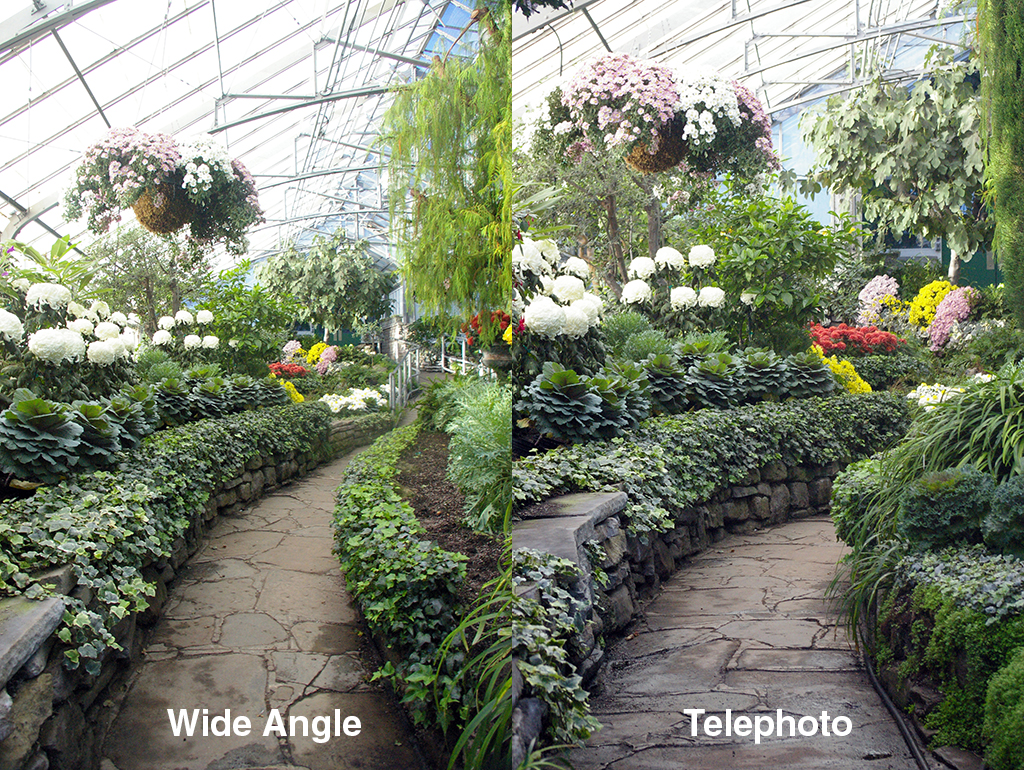
Filters
Camera phones and point-and-shoot cameras often have sophisticated digital filters built into them. For 35mm and DSLR cameras, filters can attach to the front of the lens and provide different image-enhancement effects. Filter size is quoted in diameter (mm) and usually indicated on a lens with the symbol “ø.”
- UV/Haze filter—blocks ultraviolet radiation and helps to produce sharper images of scenery during hazy weather. Since the filter does not introduce any colored effects in photographs, it is often used to protect the front of the lens from scratches, fingerprints, dust, and damage (Figure 2-7).
- Polarizing filter—blocks glare (white light) reflected from nonmetallic surfaces and enhances color saturation on subjects. Often used for photographing scenery and product photography (Figure 2-7).
- Light-balancing filters—help neutralize various lighting conditions such as incandescent room lights, fluorescent office lights, and outdoor shadows. These filters have been largely supplanted by the automatic white-balance feature of digital cameras, which neutralizes the image to the light source.
- Special-effects filters—filters like cross-stars produce starburst and other effects.
- Colored filters—filters such as red, green, and blue can be used to enhance certain image colors in black-and-white photos (Figure 2-8). For example, Ansel Adams often used a red filter to make the sky look darker in many of his famous Yosemite photos.
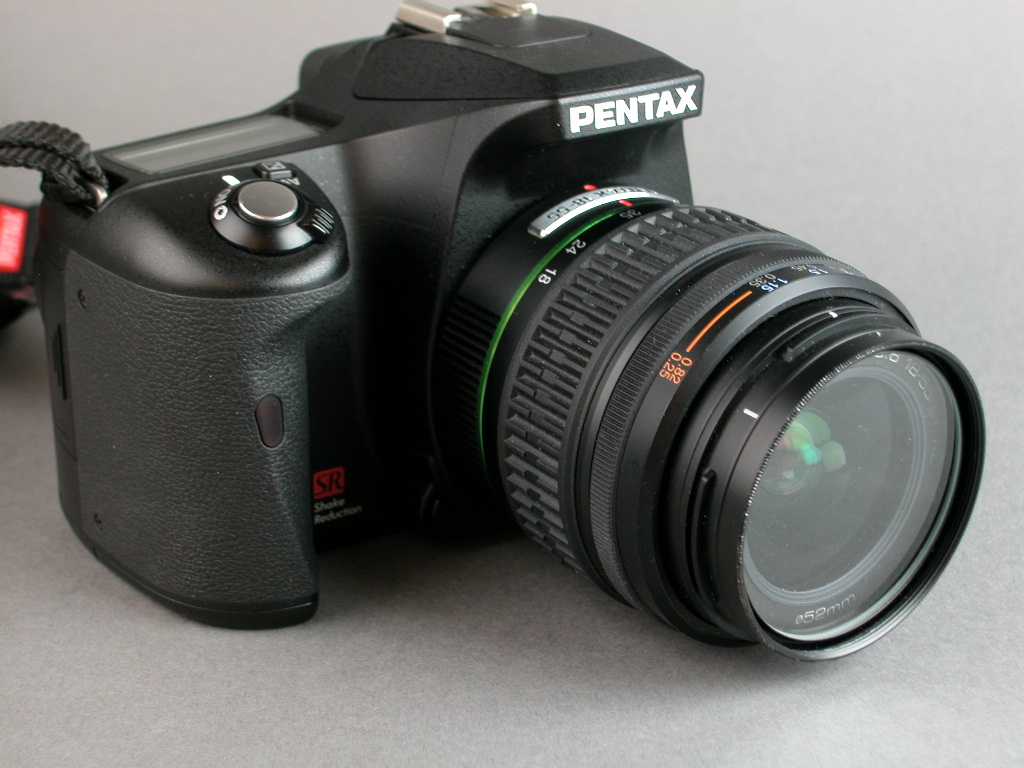
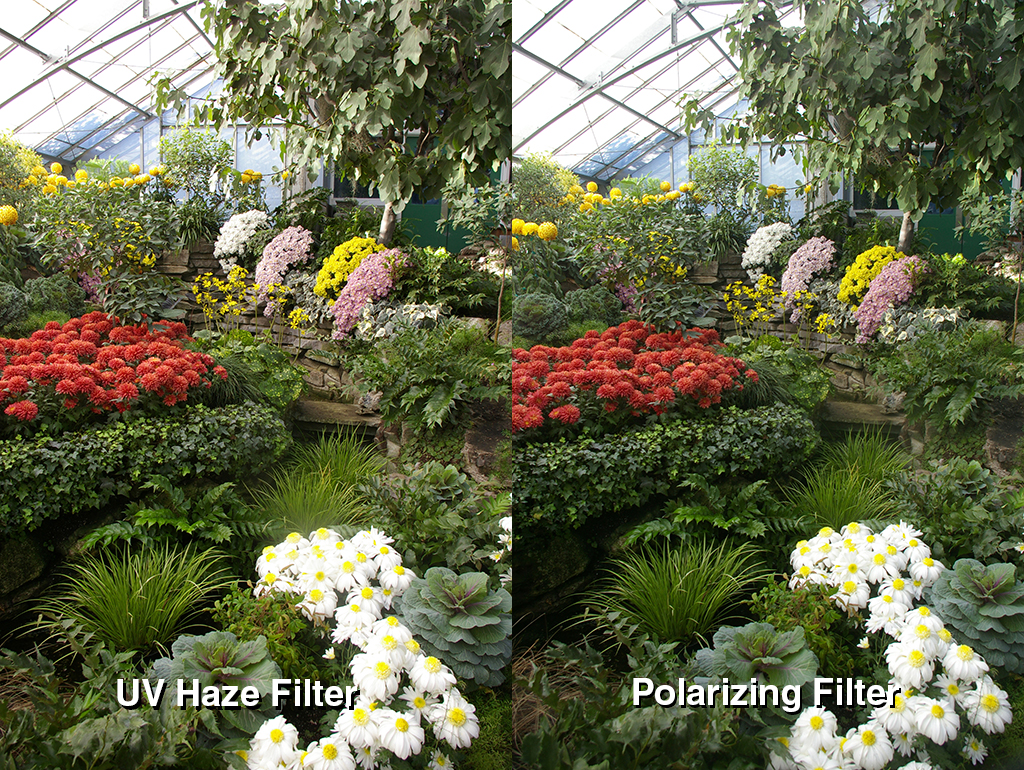

Lighting
For studio photography, you will need some type of lighting, in addition to the available daylight or office lighting. Studio lighting increases the available light intensity for your photographs, enabling you to use smaller apertures and faster shutter speeds. These, in turn, provide greater depth of field and sharper photos by minimizing the effects of camera motion. Studio lighting also provides a controlled “color” (color temperature) of white light, keeping your photos in consistent color balance.
Studio lights can be classified as to lighting duration and temperature. Continuous lights, such as incandescent or mini-fluorescent lamps, provide a constant light source. Strobe lights provide a bright flash in a fraction of a second. By shining all the time, continuous lights enable you to visualize your scene better and focus the camera, but may not be as intense as strobes. Strobe lights, on the other hand, make it difficult to see the scene as it will be illuminated, but provide brighter light. They also reduce motion of the subjects by providing a short burst of light.
Among continuous lights, quartz-halogen, incandescent and mini fluorescent lights are classified as “hot” and “cool” lights, respectively. Hot lights are more difficult to handle due to the heat generated but are cheaper to buy and provide more intense lighting. Cool lights remain cool to the touch so are safer to work with than hot lamps, but do not produce as intense a light.
Reflectors and Diffusers
Studio lights act as point light sources, which can produce harsh illumination and sharp shadows. To diffuse their light you can use a reflector or a diffuser. Reflectors, such as aluminized umbrellas (Figure 2-9, left), diffuse light by bouncing it off of an uneven, metallized, semi-spherical surface that scatters the light. Diffusers, such as soft-boxes (Figure 2-9, right), transmit light through a translucent cloth that scatters it. Reflectors can also be handy in the field, to light a subject, or to help with fill.
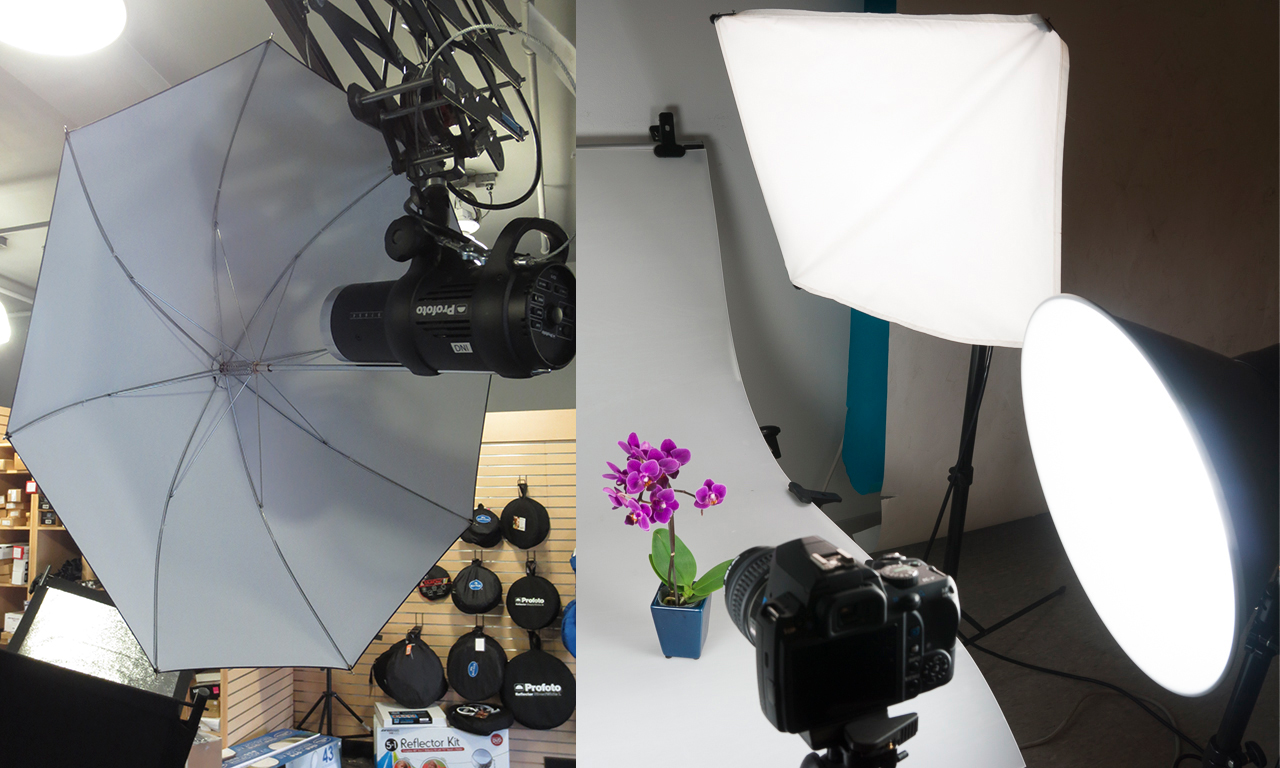
Stands
Tripod. To mount your camera and avoid image shake, you will need a tripod. Tripods come in two types: quick-release and screw-on. Quick-release tripods (Figure 2-10) have a removable base plate that you can attach to the camera, then snap into the tripod. Conventional tripods have an attached screw mount that you screw into the base of the camera.
Light stands. Light stands are used for mounting hot and cool continuous lamps and strobe. They are not as sturdy as a tripod but do enable the lamps to be positioned at anywhere from ground height to several feet above the floor.
Copy stands. A copy stand (Figure 2-11) is useful for photographing flat work. A copy stand has mounts to hold lights at a 45° angle from the artwork to evenly illuminate it and avoid glare. A copy stand can also be used to hold the camera for closeup macro work.
Photography equipment, tripods in particular, can be purchased cheaply through online marketplaces like Craigslist and Facebook.
